MVP Rodgers Hasn’t Decided Future with Packers
GREEN BAY, Wis. – Green Bay Packers quarterback Aaron Rodgers won his fourth NFL MVP on Thursday.
Will he be back in Green Bay to potentially win a fifth MVP and continue his pursuit of a second Super Bowl championship?
Speaking at NFL Honors after winning the league’s top individual honor for a second consecutive season, Rodgers said he has not made that decision but will do so in the “near future” because he knows the team has major decisions to make before the start of the league-year on March 16.
“I have not made any decision yet,” Rodgers said after winning MVP. “I’ve just been easing into the offseason and excited about being here tonight. Feels like a dream, surreal for sure. Obviously, not how we wanted to finish the season, but to be sitting here as a four-time MVP, it's crazy. I'm so thankful. Like I said in the last press conference, I'll make a decision in due time and not in a ton of time. There’s going to be a decision in the near future and I'm not going keep a lot of people waiting.”
With a much stronger relationship with general manager Brian Gutekunst and a grasp of the other key questions hovering over the franchise, Rodgers’ decision should be coming sooner than later. Last year, his return to Green Bay wasn’t sealed until just before the start of training camp. This year, he met with Gutekunst and other key members of the organization soon after the season ended to get a feel for the team’s plans at quarterback and how it will field a championship-contending team despite major salary cap problems.
“I was obviously frustrated about some things in the offseason,” Rodgers said. “We had a ton of conversations and I just felt like there was so much growth, and I’m so thankful for that. I’m thankful for the relationships – with Brian as much as anybody.”
Ultimately, Rodgers’ decision will come down to a couple factors.
One, does he want to return for an 18th season in the NFL? When he skipped last year’s offseason practices, Rodgers got a taste of retirement life and enjoyed it. Echoing what he said after the season, Rodgers said, “I don’t have a fear of retirement.”
Two, does he believe his best chance for winning a second Super Bowl comes in Green Bay? Or does he see a better opportunity in, say, Denver, which hired Nathaniel Hackett as coach?
Based on his comments during a 10 1/2-minute Zoom conference after winning MVP honors, it appears his choices are Green Bay or retirement.
#Packers QB Aaron Rodgers fielded a handful of questions after winning MVP last night. He (maybe) provided some hints on his future, which he said he'll decide in the "near future."https://t.co/22D7DZIvj7
— Bill Huber (@BillHuberNFL) February 11, 2022
With Rodgers, the Packers became the first team in NFL history with three consecutive seasons of 13 wins. While it wasn’t enough to get them back to their first Super Bowl since 2010, his presence at least gives the Packers a chance to contend, which is why coach Matt LaFleur and team President Mark Murphy have said they wanted Rodgers back for 2022.
“We’re hopeful he’ll be back next year, obviously,” LaFleur said after the season. “This guy has done so much for such a long period of time for this organization, for this city, for this team. And so, I want to be respectful of his process. Whatever he needs to go through to make the best decision for himself, and certainly we would love for him to be a Packer and be a Packer to the day he decides to retire.”
The line between contender and pretender couldn’t have been starker than it was in 2021. Green Bay went 13-2 in regular-season games started and finished by Rodgers but lost at Kansas City in Jordan Love’s first start and lost at Detroit when Love played the second half. Rodgers and Love were responsible for the same number of turnovers, four apiece, even with Rodgers getting about 88 percent of the snaps at quarterback.
Had Love shown any glimmer that he could continue the team’s three-decade run of quarterbacking excellence, perhaps the team’s desire to have Rodgers finish his career in Green Bay would have been different. After all, moving up in the first round to select Love in 2020 wasn’t done just because the team desired a better backup. It was done in hopes of getting another great quarterback, getting a cache of draft picks and/or players in return via a trade of Rodgers this offseason and creating millions upon millions of dollars of salary cap relief by going with the less-expensive quarterback.
From a financial perspective, the idea presumably was to hand the offense to Love in 2022. But Rodgers responded to the controversial selection of Love by earning back-to-back MVPs. Combined with Love’s struggles against the Chiefs and Lions, the team’s desire to stick with Rodgers probably was a no-brainer from a wins-and-losses perspective.
With Rodgers’ future on hold, the rest of the franchise’s offseason plan remains on hold, too, though there’s still ample time with the league-year not starting until March 16.
Clearly, Rodgers’ decision is the biggest of a critical offseason for the Packers as they try to reload following another playoff failure. Whatever way it ends with Rodgers, his contract will be a major part of the team’s path to digging its way out of a $50 million hole in the salary cap.
As it stands, Rodgers’ cap charge in 2022 – his final year under contract – is an untenable $46.7 million. The Packers would get $19.8 million of cap relief by trading Rodgers, or they would get some cap savings by committing to him long-term with an extension. With an extension, the Packers could give Rodgers a minimum salary and hefty signing bonus and create somewhere in the neighborhood of $10 million of cap space. They could create even more space by relying on start-of-year roster bonuses in 2023 and 2024.
Rodgers’ decision presumably will factor in the other big decision: the free-agent fate of All-Pro receiver Davante Adams. It’s hard to believe Rodgers would come back to Green Bay without his favorite receiver and one of his favorite people. It’s also hard to believe Adams would want to return to Green Bay without Rodgers slinging the football. Receivers are judged by their stats. With Adams in the midst of a Hall of Fame-worthy stretch of seasons, playing alongside an unproven quarterback could impact his legacy.
The Packers could use the franchise tag on Adams to ensure he stays in 2022. That window begins on Feb. 22 and ends on March 8. If Rodgers returns, the team no doubt would want to use the franchise tag on Adams as a way to buy time to work out a long-term extension. If Rodgers wants to be traded, the team could look to trade Adams, as well. A bevy of first-round picks would give the Packers the opportunity to rebuild on the fly.
With Adams leading the way, Rodgers was magnificent with 37 touchdowns vs. four interceptions – including 37 touchdowns and two interceptions after Week 1. He led the NFL in passer rating, touchdown percentage and interception percentage.
With a fourth MVP, Rodgers broke a tie with Brady, Brett Favre, Jim Brown and Johnny Unitas as three-time winners. With that, history is within his reach. Peyton Manning is the only five-time MVP and Favre is the only player to win three consecutive MVPs.
This MVP came 10 years after he won his first.
“I think the older you get, the smarter you have to get in a number of different areas,” Rodgers said late in the season when asked to compare a potential 2021 MVP with his first MVP season of 2011. “Obviously, the experience gives you a lot of banked memories you can draw from, but physically, just from a physical standpoint, I probably weighed between 225 and 230 (pounds) the majority of the season in 2011, and I’ve been between 215 and 220 in the majority of this season, so that 10 pounds has made a big difference for me. It’s allowed me to still move in the pocket, to still keep legs.”
One: Aaron Rodgers Becomes Only Four-Time MVP
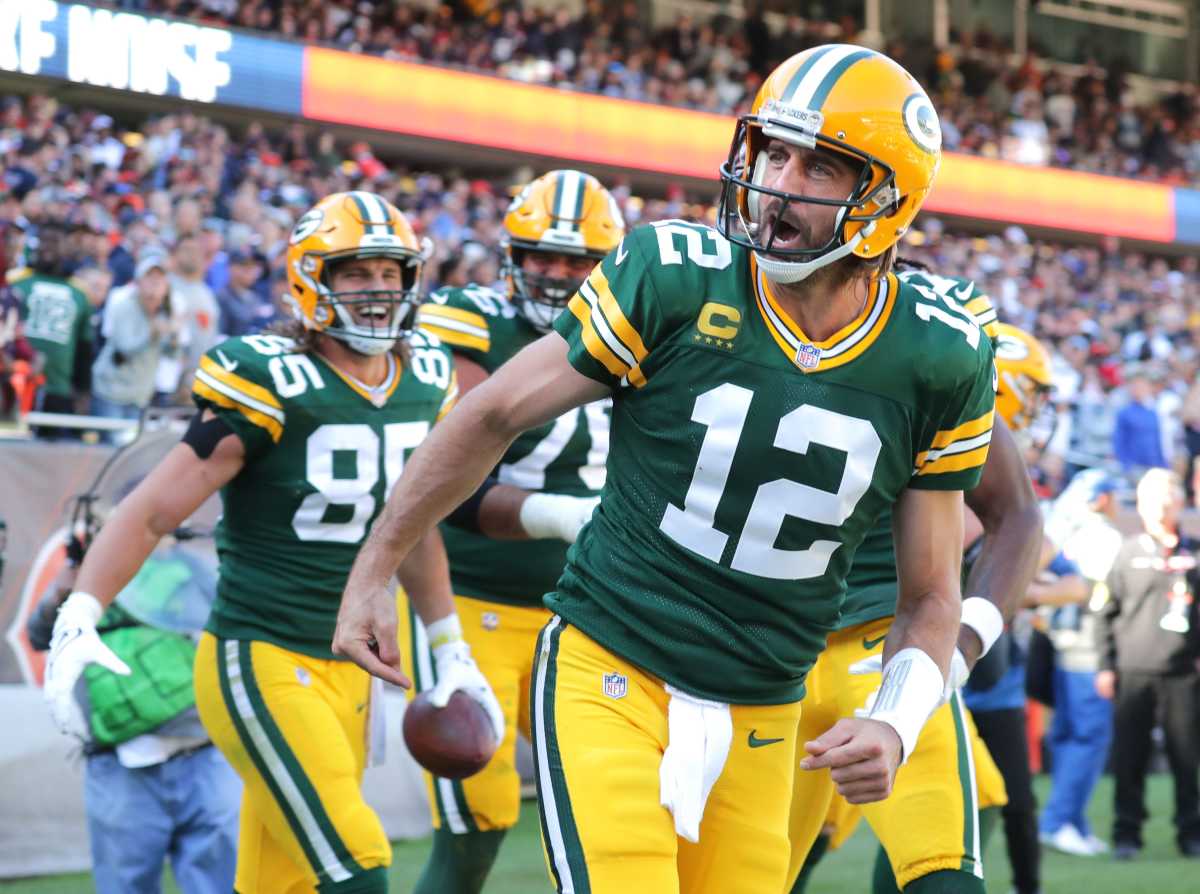
With last year’s MVP, Rodgers joined four legends as three-time MVPs: running back Jim Brown (1957, 1958, 1965), quarterback Johnny Unitas (1959, 1964, 1967), quarterback Brett Favre (1995 through 1997) and quarterback Tom Brady (2007, 2010, 2017).
With his fourth MVP, Rodgers has broken from that pack and is alone in second place. Peyton Manning won a record five MVPs – four with Indianapolis (2003, 2004, 2008 and 2009) and one with Denver (2013).
For Manning and Brady, their first MVP and last MVP were separated by 10 years. Rodgers’ fourth MVP comes 10 years after his first.
Two: Rodgers’ Red-Hot Finish
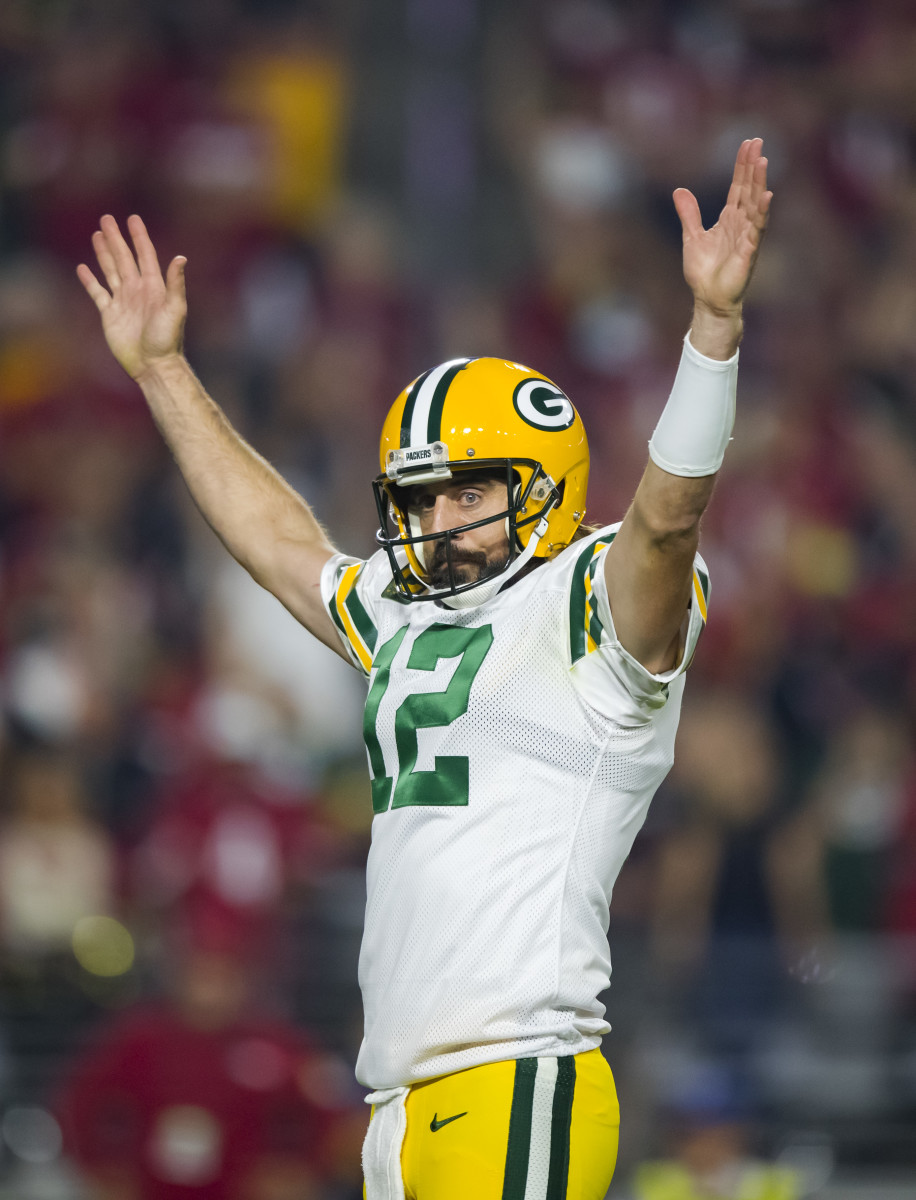
Rodgers put his stamp on the MVP race with a sensational finishing stretch to the season. Despite laboring through a broken toe that curtailed his practice time, Rodgers ended the season with seven consecutive games of two-plus touchdown passes and zero interceptions. That’s the second-longest streak in NFL history. In 2010, Tom Brady did it in nine consecutive games. Rodgers threw 20 touchdown passes during his streak, which he’ll carry into next season. Brady threw 24 touchdown passes.
Three: Rodgers Showed He’s Valuable, Part 1
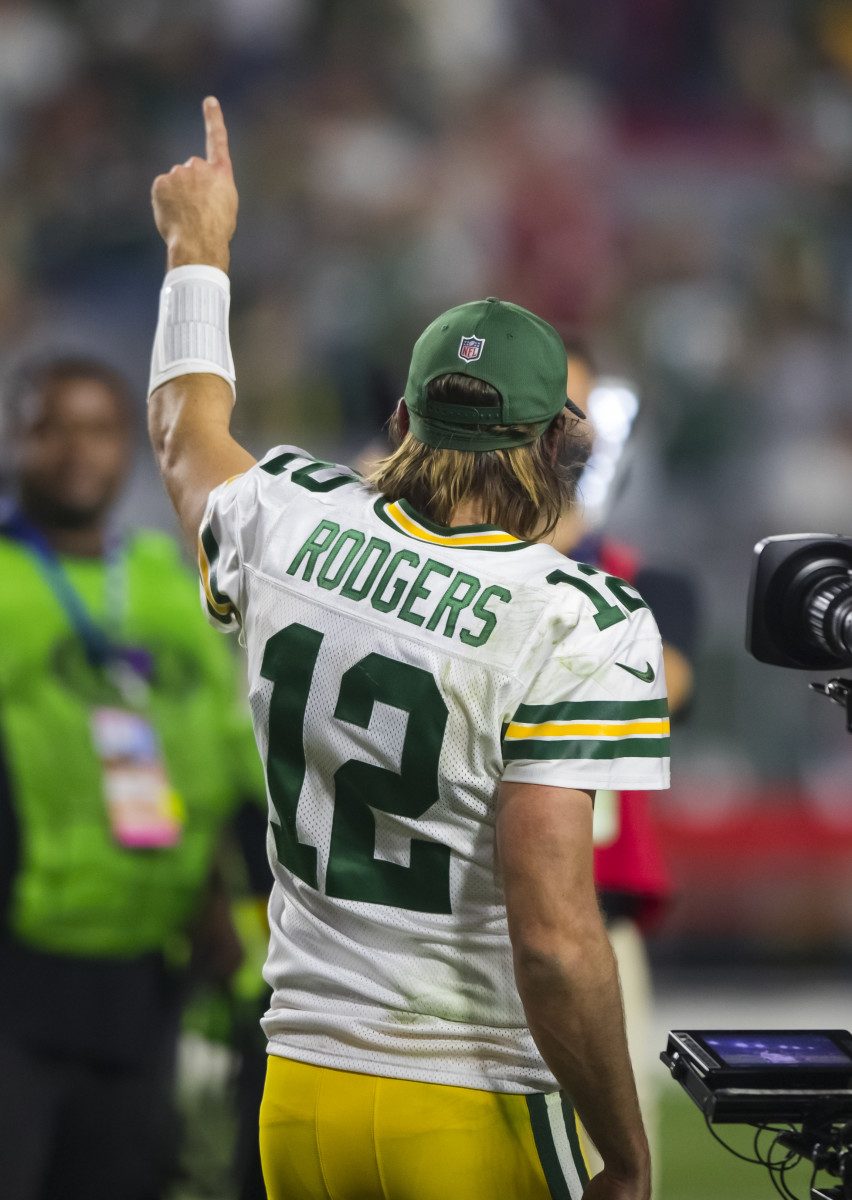
Being MVP doesn’t simply mean having the best stats. It’s that middle letter – the “V” for Valuable. The Packers were the second-most-impacted team by injuries this season, according to ManGamesLost.com. In terms of the value of the player and the amount of games missed, David Bakhtiari was the most important injury of the NFL season, Za’Darius Smith was second and Jaire Alexander was ninth. Rodgers’ play obviously was an important part of the team’s 13-win season.
Four: Rodgers Showed He’s Valuable, Part 2
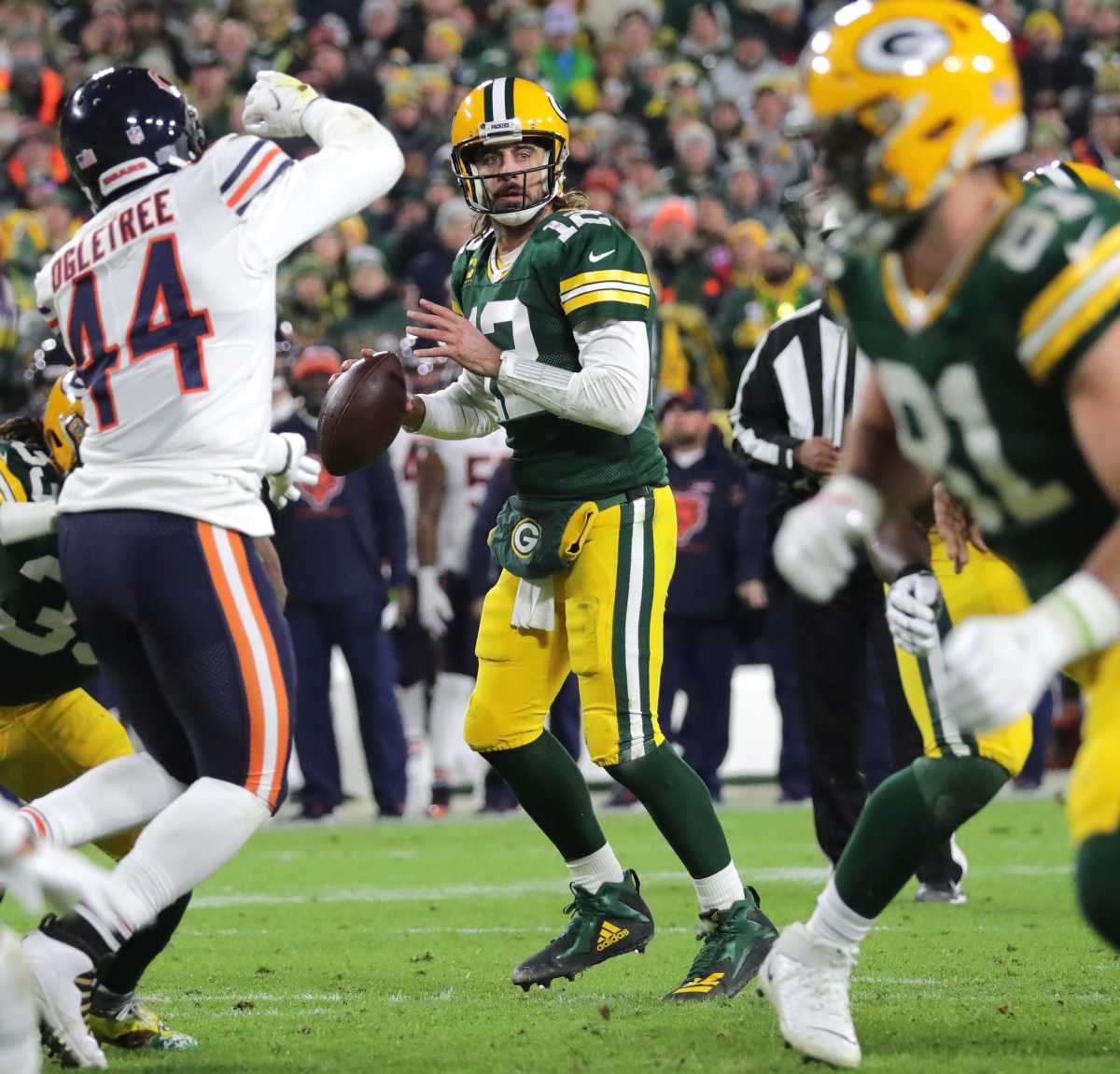
In games started and finished by Rodgers, the Packers went 13-2. The Packers went 0-2 with Jordan Love starting against Kansas City and playing the second half at Detroit.
Five: MVP? Yes. Super Bowl? No.
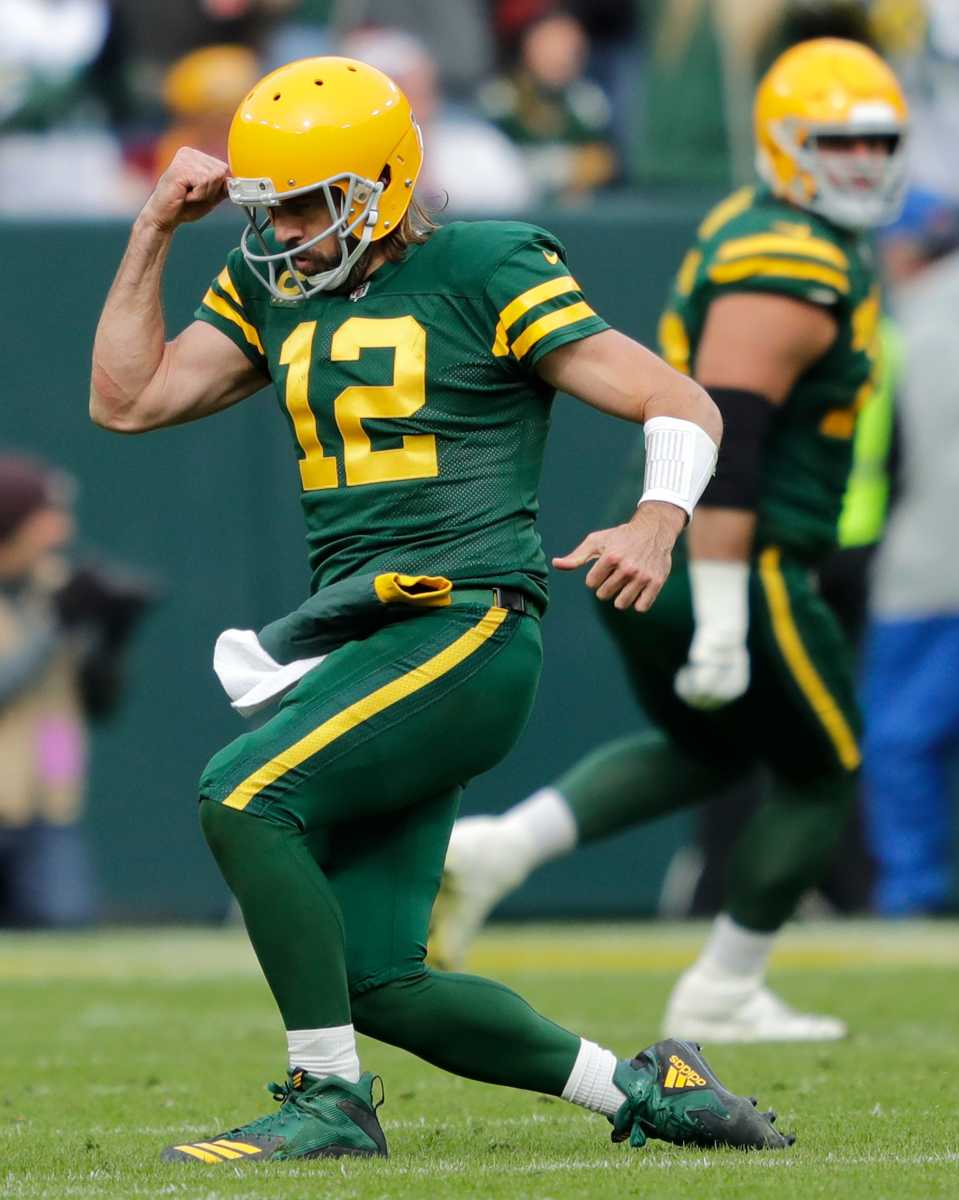
Incredibly, being the Most Valuable Player of the NFL season doesn’t mean being the Most Valuable Player of the NFL postseason. No MVP has won the award in the same year he won the Super Bowl since Kurt Warner with the St. Louis Rams in 1999.
Six: Rodgers Leads Three Key Categories
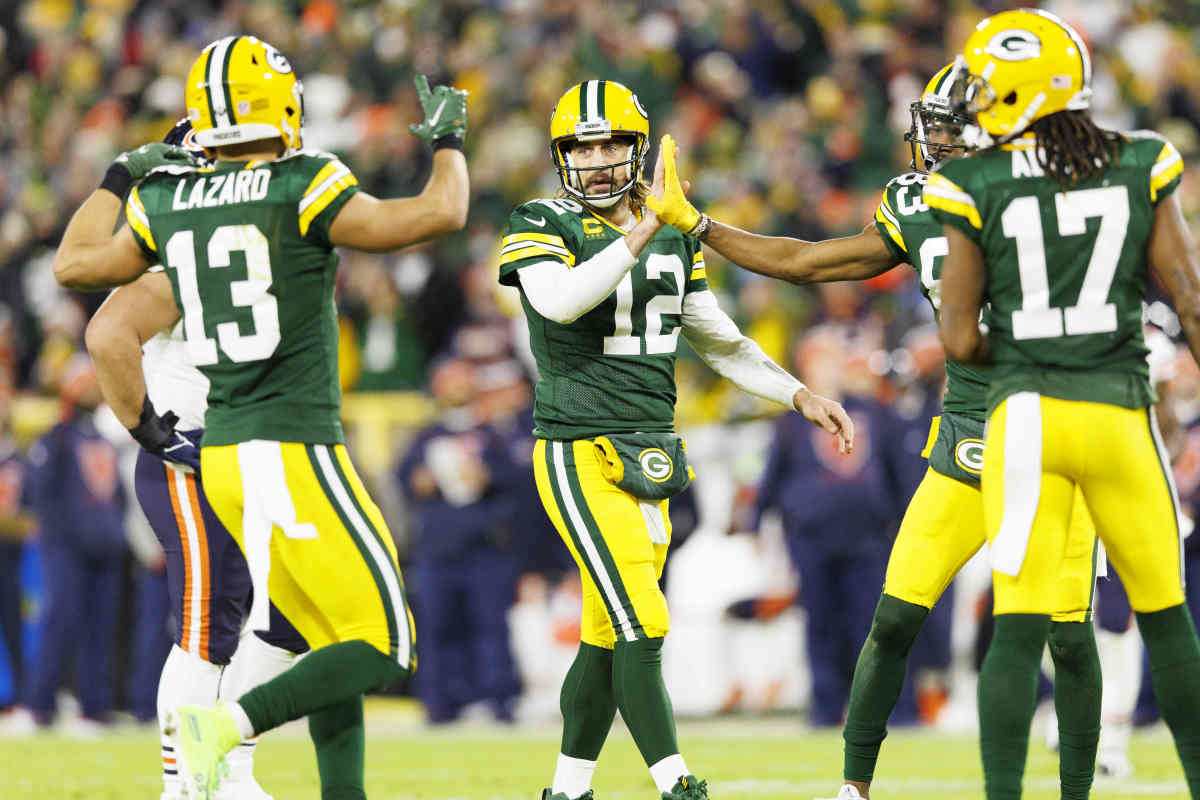
Last season, Rodgers joined Steve Young as the only quarterbacks since 1940 to win the Percentage Triple Crown of completion percentage, touchdown percentage and interception percentage on the way to leading the league in passer rating. This season, Rodgers finished third in completion percentage but was first again in touchdown percentage, interception percentage and passer rating.
That feat has been accomplished only five times since 1960: Rodgers in 2020 and 2021, Tom Brady in 2010, Young in 1992 and Ken Anderson in 1981.
Seven: Efficiency, Not Volume, Gives Rodgers MVP Edge Over Brady
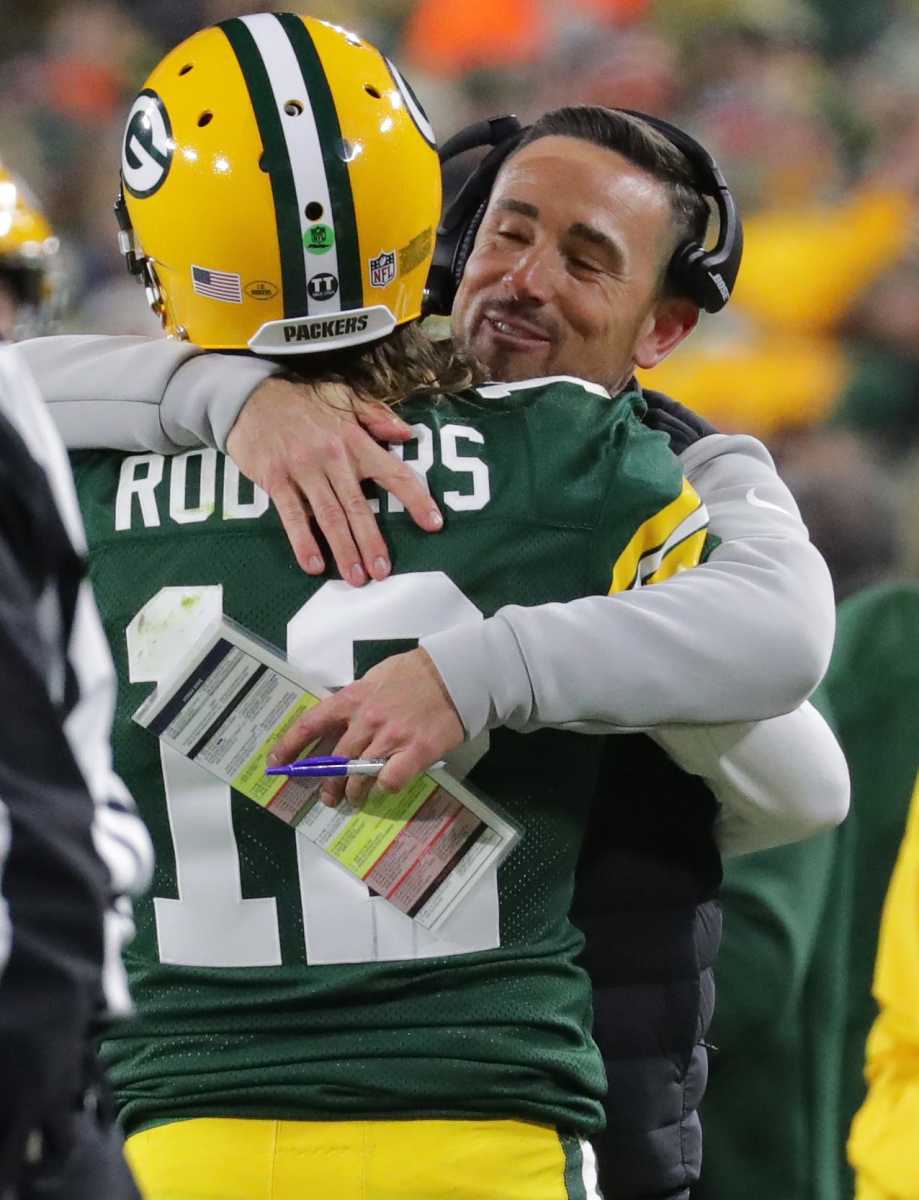
The debate between Rodgers and Buccaneers quarterback Tom Brady is fascinating. Brady put up some absurd numbers in leading the NFL with 5,316 passing yards and 43 touchdowns. The Buccaneers also went 13-4.
Brady crushed Rodgers (and everyone else) by the numbers because he threw 47 passes more than any other quarterback and 188 more passes Rodgers. Give Rodgers the same number of attempts as Brady, and Rodgers would have thrown for 5,572 yards and 50 touchdowns and beaten Brady’s completions record with 494.
Eight: Don’t Pick on Rodgers
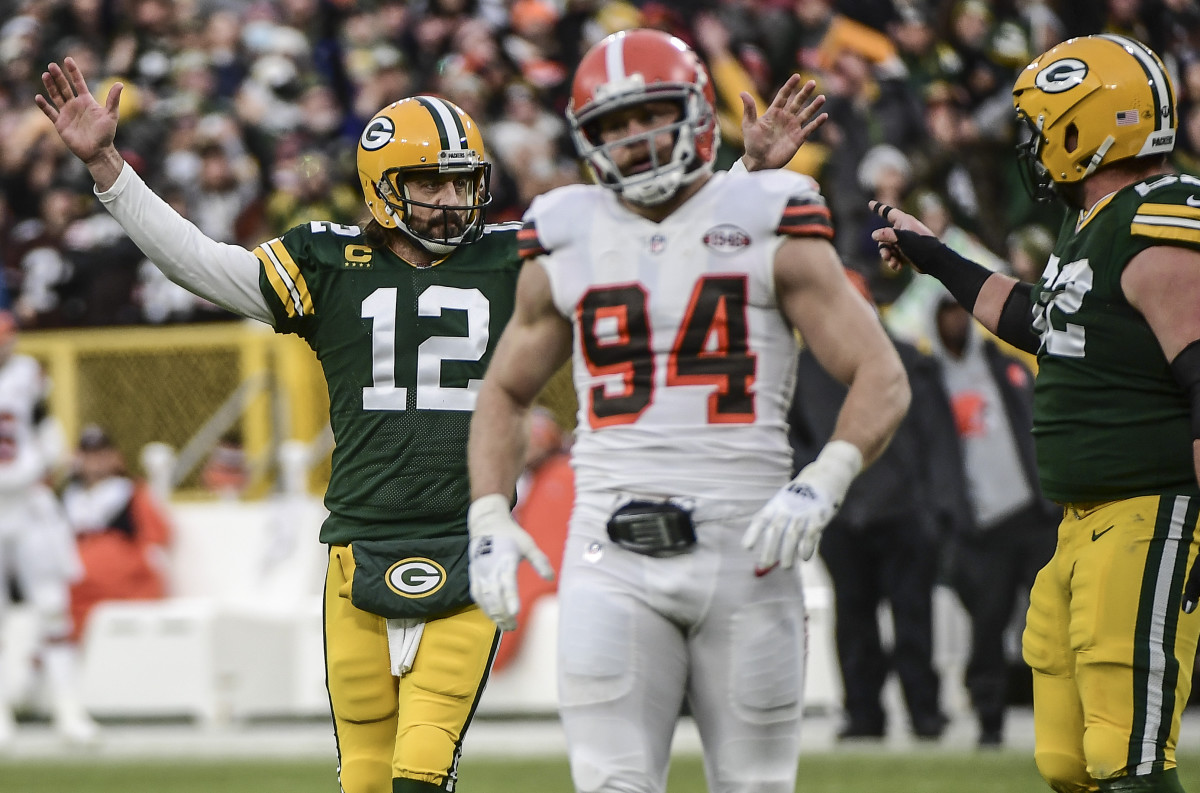
There have been 13 seasons in which a quarterback threw at least 400 passes and finished the season with an interception percentage of less than 1.0. Rodgers has five of those seasons, including 2021, when he led the NFL with an interception rate of 0.75 percent. Tom Brady (twice) is the only other quarterback with multiple seasons.
Rodgers has finished with an interception rate of less than 1.0 percent four consecutive seasons. No other quarterback has even done it in back-to-back seasons.
Nine: In Good Hands with Rodgers
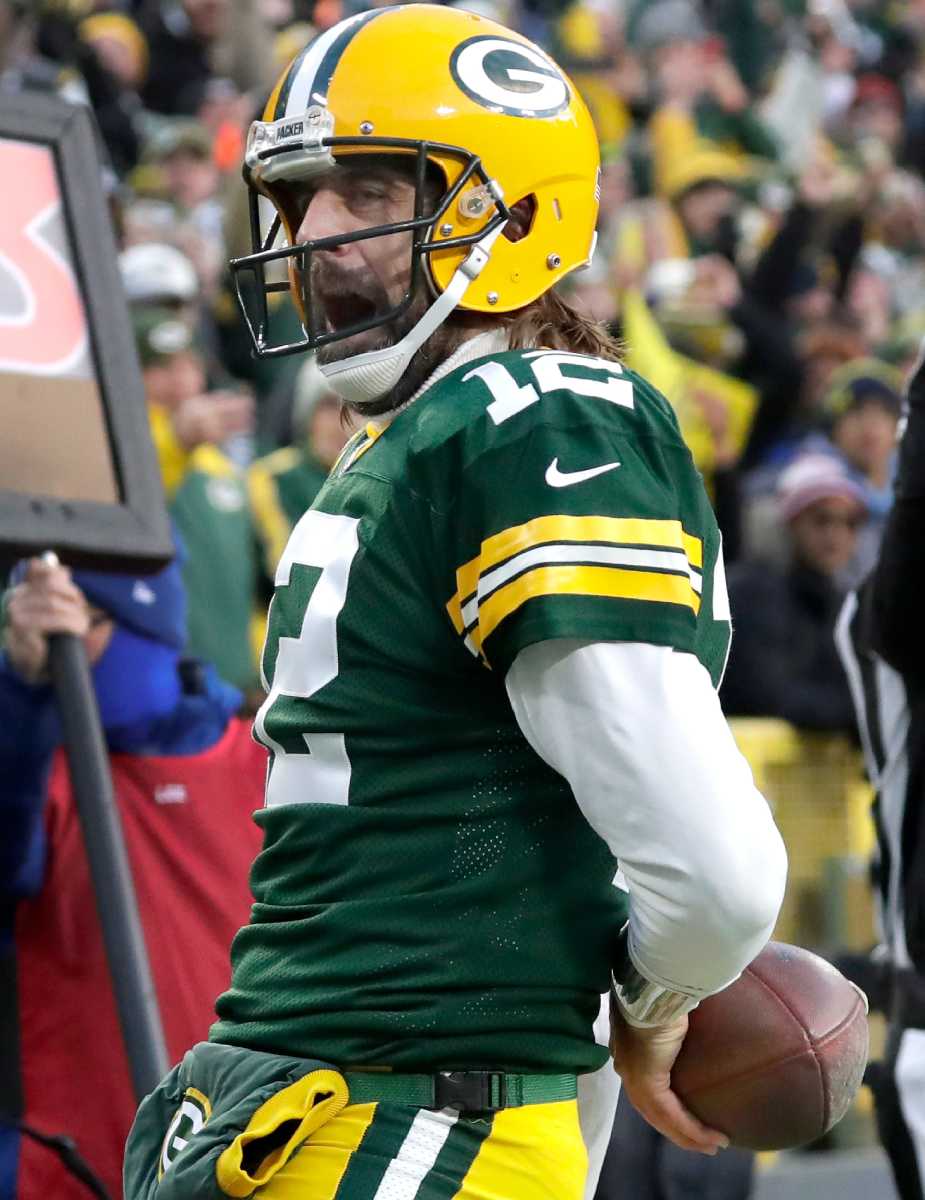
Perhaps Rodgers needs to switch insurance companies and pitch for the one that talks about being in good hands. Not only did he lead the NFL with only four interceptions, but he didn’t lose a fumble, either. That gave Rodgers a league-low four turnovers. Seattle’s Russell Wilson, who missed three games due to injury, was a distant second with seven.
Turnovers have to be a part of any conversation about the Packers’ quarterbacking future. In 561 passing plays (531 attempts, 30 sacks), Rodgers had just those four turnovers. In 65 passing plays, Jordan Love also had four turnovers (three interceptions, one fumble).
Ten: Touchdown-to-Interception Ratio Champion
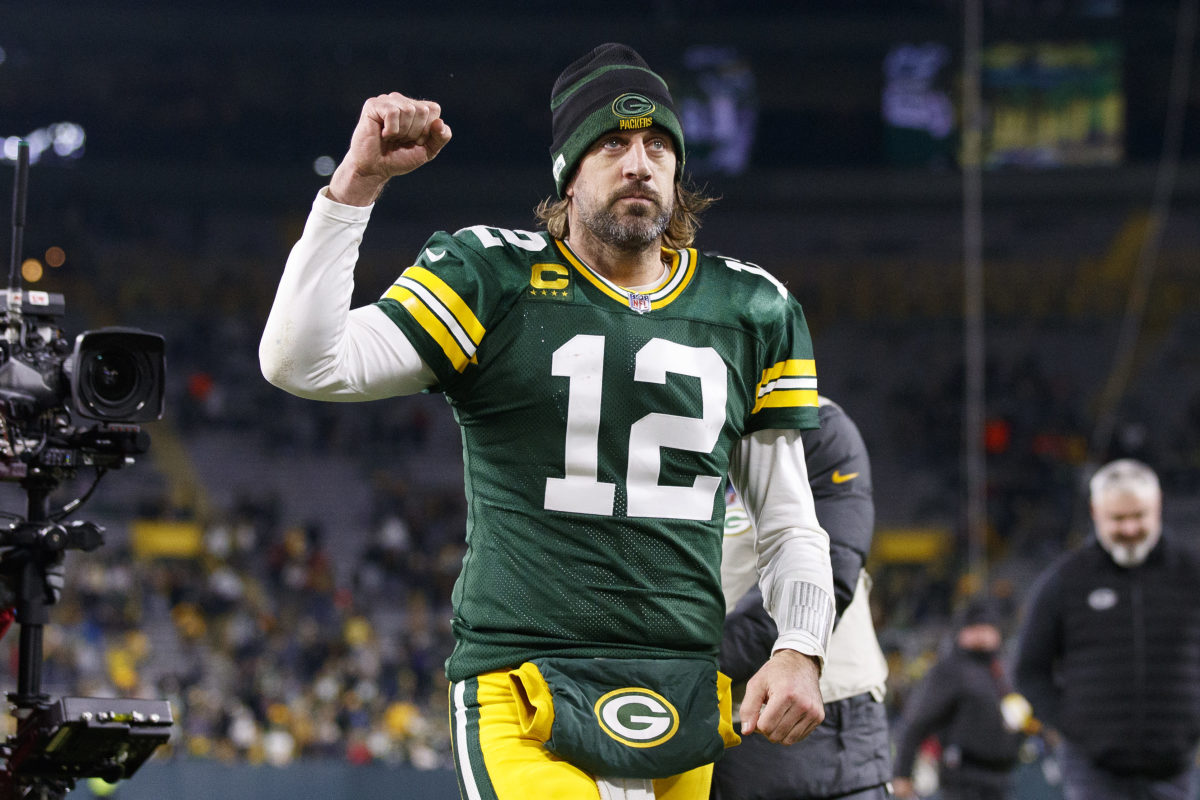
With 37 touchdowns vs. four interceptions, Rodgers threw 9.25 touchdown passes for every interception, more than double Kirk Cousins’ runner-up 4.71 (33 touchdowns, seven interceptions). That’s the seventh-best mark in NFL history. In NFL history, there have been 12 seasons in which a quarterback had a touchdown-to-interception ratio of at least 6.50. Rodgers has half of those seasons, including four in a row.
If there’s one stat you take from this, here it is: There have been six seasons in NFL history of 6.50 touchdowns per interception and 4,000-plus passing yards. Rodgers has all six.
Quote to Note
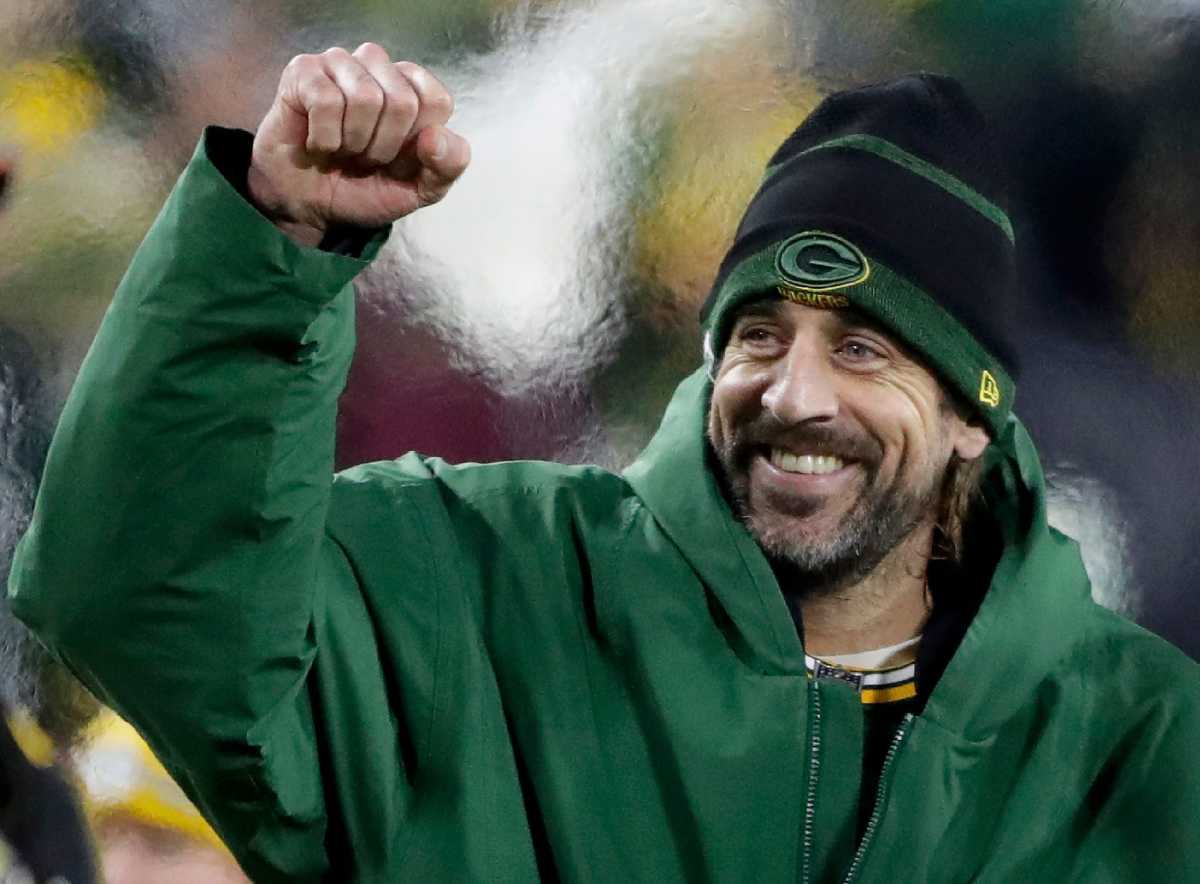
“There’s obviously a faction, based on the response when I tested positive, that want to demonize me for my decision to be unvaccinated. That’s the environment that we’re living in. There is not room for dissenting opinions or individual freedoms or people to have a different view. … I think the MVP should be about the most valuable player on the team. A lot of times it goes to the best player on the best team, and we’re the best team. So, if voters want to use the offseason or don’t like my stance being unvaccinated, that’s their prerogative. I don’t think it’s right, but that’s their prerogative.”
